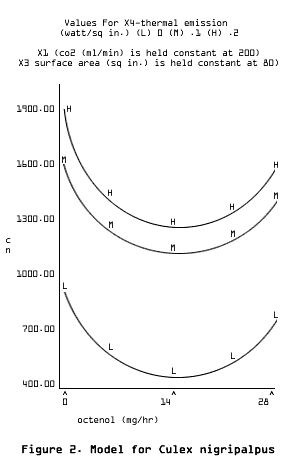NEWS RELEASE
FOR IMMEDIATE RELEASE
CONTACT: Betty Galligan, APR
Newberry PR & Marketing, Inc.
(401) 433-5965 [email protected]
NEW ENGLAND FIRM DONATES ENVIRONMENTALLY SAFE MOSQUITO PROTECTION PRODUCT TO HURRICANE VICTIMS
Florida experiencing explosive mosquito counts statewide
TALLAHASSEE, FL and WILLIMANTIC, CT (October 26, 2004): BioSensory,
Inc., a Connecticut-based technology company, has donated $10,000 worth of its
Mosquito ‘Cognito product to be distributed by the Capital Area Chapter of the American Red Cross in Tallahassee, FL to needy people throughout the state who are facing a pandemic mosquito crisis.
The American Red Cross has been serving Tallahassee and the surrounding area since 1917. In the past eighty-three years, the American Red Cross has provided a helping hand by reaching out to local residents, and last year touched the lives of more than 10,500 people in the eight counties that it serves. “Since the hurricanes, Florida has experienced an explosive increase in its mosquito population, including the panhandle,” states BioSensory President Jim Nolen. “With people sleeping outside in tents and the increasing threat of West Nile Virus and EEE, we felt it was important to respond to the need for mosquito protection.”
According to Susan McKnight, BioSensory’s entomologist, “Standing water after the hurricanes have become a breeding ground for mosquitoes. Trap counts of 80,000 mosquitoes per night have been logged from several counties – one of which trapped 2.25 million in one night. Normally, most counts average 100 per night so you can see that the problem is explosive. Mosquito activity will slow as the cold fronts approach but it will not cease until Florida’s first frost which may not be until mid-November or early December. However, the threat of West Nile is present year-round in some parts of the state.”
Mosquito ‘Cognito is a battery-operated tabletop inhibitor which uses a potent but environmentally safe substance called Conceal® to keep people and animals safe from biting insects. The Conceal inhibitor molecule is naturally found in a number of essential oils of plants and is widely used as a food flavoring. BioSensory’s light, compact Mosquito ‘Cognito device is a tabletop inhibitor (not a repellent) which dispenses Conceal into the atmosphere by a quiet, batterypowered fan. A mosquito with a “nose full of Conceal” has difficulty smelling anything or anyone, so they can’t home in on their targets.
In field tests conducted by qualified entomologists from Florida to New England, the Mosquito ‘Cognito has been shown to reduce mosquito landings on humans by up to 80% when used as directed. During the 2000 Olympics, Mosquito ‘Cognito won praise for protecting the valuable horses of the U.S. Equestrian Team during the West Nile Virus crisis.
“Mosquitoes are attracted to carbon dioxide and Octenol, chemicals that humans and animals emit when they exhale, which can be detected from 100 feet away,” explains Mr. Nolen. “The concept behind our Conceal technology is that it inhibits mosquitoes’ sense of smell, blocking their ability to track scent. In U.S. Department of Agriculture laboratory tests, Conceal was twice as effective as DEET and more effective than Citronella at preventing landings. Fewer landings mean fewer bites.” In 2003, world-renowned research entomologist Daniel L. Kline of the U.S. Department of Agriculture’s Center for Medical, Agricultural and Veterinary Entomology (Gainesville, FL) along with BioSensory’s Susan McKnight conducted comparative tests in Florida swampland and Connecticut woodland to determine the effectiveness of Conceal’s active ingredient against Citronella. Participants experienced between 26% and 64% fewer mosquito landings than those using Citronella or no/plain candles for protection.
“Our technology is quite sound and continues to be proven effective for both humans and animals,” Mr. Nolen adds. “Conceal will soon make Citronella obsolete.”
Developed through a research and development agreement with the U.S. Department of Agriculture, the Conceal inhibitor represents a scientific breakthrough that has earned a series of patents for BioSensory, which manufactures a family of mosquito protection products for residential, commercial and abatement district applications.
# # #
Established in 1996, BioSensory, Inc. is a U.S.-based manufacturer of advanced technology products to control mosquitoes and biting insects without insecticides such as Pyrethrin or repellents containing DEET. Patented and trademarked products include
The Dragonfly System, Mosquito ‘Cognito and Conceal Candles. Through a Cooperative
Research and Development Agreement with the Agricultural Research Service of the United States Department of Agriculture, the company has developed, tested and distributed environmentally safe products throughout the world. BioSensory is located in the Windham Mills Technology Center, 322 Main Street, Building 1, Willimantic, CT 06226-3149 USA. Phone: 860.423.3009; Fax: 860.423.3028; Web:
www.biosensory.com
Mosquito ‘Cognito and Conceal are registered trademarks of BioSensory, Inc.


 he format of Figure 2 is identical to Figure 1, with the exception that a different size visual target is used. In this case, the visual target was held constant at a surface area of 516 cm2 (80 in.2) simulating a small animal such as rabbit or woodchuck. This size visual target produced the largest collections of mosquitoes.
he format of Figure 2 is identical to Figure 1, with the exception that a different size visual target is used. In this case, the visual target was held constant at a surface area of 516 cm2 (80 in.2) simulating a small animal such as rabbit or woodchuck. This size visual target produced the largest collections of mosquitoes.